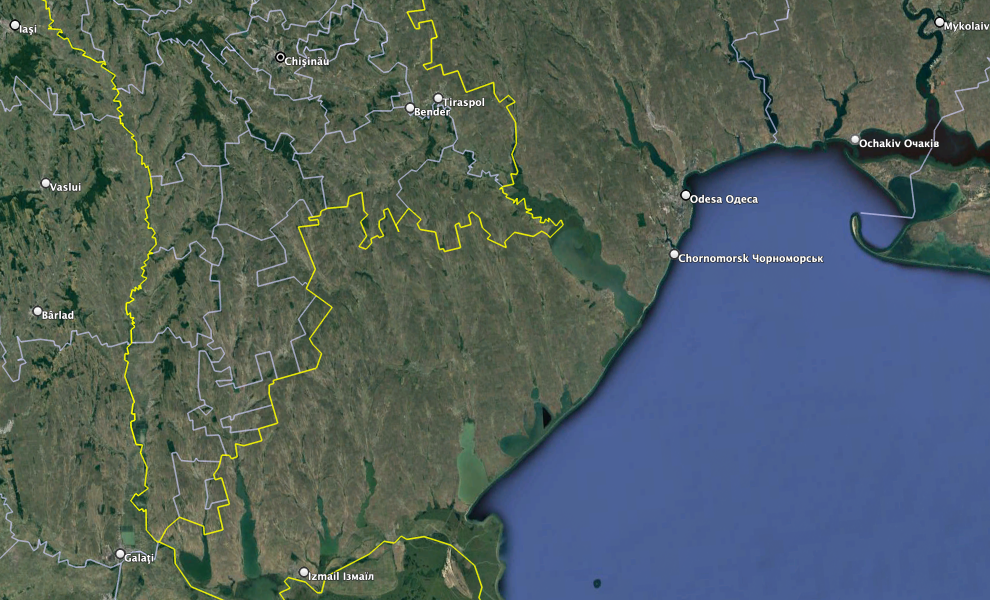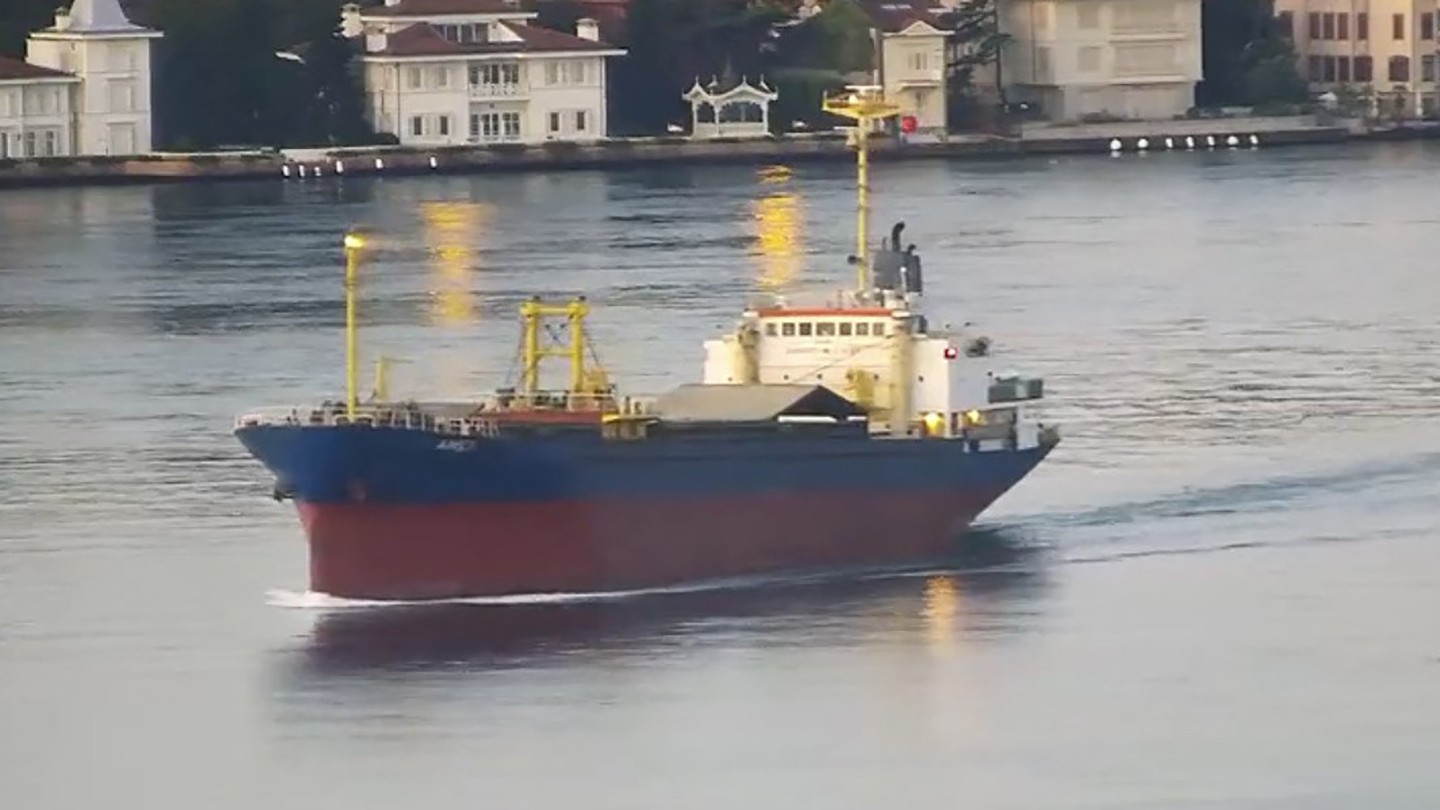At least six civilian cargo ships have seemingly ignored warnings issued last month by Russia with one entering the Danube River and five others apparently anchored in the Black Sea near the mouth of the river. The ships have indicated they are heading to the Ukrainian up-river port of Izmail, according to openly shared Automatic Information System (AIS) data published on the vessel-tracking MarineTraffic website.
On July 19, after it withdrew from the Black Sea Grain Initiative, Russia issued a warning that “all vessels sailing in the waters of the Black Sea to Ukrainian ports will be regarded as potential carriers of military cargo.” That reinitialized a blockade on Black Sea shipping to and from Ukraine it imposed at the beginning of its all-out war on Ukraine and put on pause during the time period when the grain deal was put into play.
News of the vessels ignoring the warning on July 30 was first reported by Markus Jonsson (@auonsson ), an open-source tracker, in a tweet that day.
The ships – Ams1, Afer, Bosphorus Queen, Sahin 2, Sealock and Yilmaz Kaptan – were all declaring their intent to sail to Izmail as of 2 p.m. Eastern time, according to the data posted on MarineTraffic. The Ams1 is the only one to have entered the Danube.
Jonsson reported that Ams1, Sahin 2, and Yilmaz Kaptan – sailing respectively from Israel, Greece, and Turkey – headed across the Black Sea, “openly advertising destination Ukraine over AIS.”
Ams1 and Sahin 2 passed through the Bosporus Strait, while Yilmaz Kaptan sailed west from northern Turkey, he reported, later corroborating his report with satellite imagery.
Three more ships – Sealock, Bosphorus Queen, and Afer – sailed through the Black Sea toward Ukrainian ports on July 30 as well, according to Jonsson. He also noted that the “[u]sual AIS-caveats apply. AIS-data is possible to manipulate. Further, there might be more ships that I have not found.”
Ukraine’s Black Sea ports have become a particular target Russia in the wake of Kyiv’s July 17 attack on the Kerch Bridge. The importance of the Danube River ports – some 130 miles to the southwest – has increased since those attacks were launched.

The Russians have destroyed at least 60,000 tons of grain according to Kyiv, as well as port facilities and infrastructure in a barrage of missiles and drones aimed at Odesa and nearby ports. Russia also launched a drone attack on the Ukrainian Danube River port of Reni, less than a half-mile across the river from Romania, on July 24.
International ships headed toward Ukraine largely came to a halt as a result of the Russian warning, The New York Times noted Tuesday. More than a dozen vessels dropped anchor, the publication reported, staying near the coast.
“Slowly and cautiously, shipping has started to return in recent days,” the Times reported. “This weekend, one vessel, Ams1, crossed into the Black Sea and set course for the small port Ukrainian port of Izmail on the Danube. At least two more vessels have followed.”
Ukrainian officials, said the Times, “celebrated what they saw as a decision by a few shipping companies to call Moscow’s bluff. But they were just as quick to caution that the movement of a few ships to river ports did not eliminate threats to those transport routes.”
While the ships sailed through the Black Sea on July 30, several U.S. and NATO aircraft were overhead, according to OSINT aircraft trackers. This list included at least three U.S. aircraft. That list includes a P-8A Poseidon maritime patrol and reconnaissance jet, an RQ-4B Global Hawk drone, an Airborne Reconnaissance and Targeting Multi-Mission Intelligence System jet (ARTEMIS). There was also a NATO U.S.-made E-3 Sentry Airborne Warning and Control System (AWACS) flying overhead.
It is unknown if there was a direct connection between those flights – which occur frequently in this region – and the transit of the ships through the Black Sea despite Russian threats. But it is conceivable that these aircraft could have been sent aloft to monitor any Russian naval and air activity in the area in relation to the vessels’ movements.
It is also unknown what cargo those ship contain and exactly why the Russians let them pass, especially after staging an ominous demonstration of its anti-ship capabilities to highlight its warning.
On July 23, the Black Sea Fleet conducted conducted live-fire drills in that body of water, sinking a vessel it captured from Ukraine in 2014. You can read more about that in our story here.
With one ship having already entered the Danube, it is unclear whether Russia will intervene against the remaining vessels in the Black Sea.
Using Ukraine’s most westerly port, one that sits right across a river from a NATO ally, does make sense when it comes to circumventing Russia’s blockade. These ships would have to be targeted far from the normal lanes that run north, past the Crimean peninsula, to Odesa. Once they get close to Romania, they are then under or very near NATO’s area of control. Targeting the vessels with standoff weaponry once amongst the littorals is problematic for Russia and fraught with danger if such an operation would to go awry. Strikes on ships underway very near or in the river using tactical aircraft would be intercepted by NATO fighters or Ukrainian ones. Once the ships have docked, they do become vulnerable to Russian cruise missile and drone attacks as seen in the recent attack on the port.
On the other hand, if this port is being used as an alternative artery for grain shipments, moving the grain there for loading could be more logistically challenging. These ships also have to leave the port and enter open waters again, which could put them in a very vulnerable position without escort.
We are monitoring this situation closely and will update this story when warranted.
Update 5:50 p.m. Eastern:
Several people have noted on Twitter that other ships have traveled through the Black Sea after Russia issued its warning on July 19.
But Jonsson, as we noted earlier in the story, stated that was only referring to those ships that openly announced their Ukrainian destination via AIS.
Contact the author: howard@thewarzone.com
